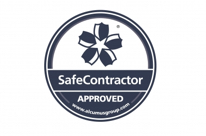Hazardous waste poses significant risks to human health and the environment throughout its lifecycle, from its initial generation to its final disposal. This article explores the stages of this lifecycle, identifies key challenges, and highlights best practices for minimising risks associated with hazardous waste management.
The dangers of hazardous waste
Hazardous waste is generated across various industries, including manufacturing, healthcare, agriculture, mining and more. And, in fact some common sources include chemicals from products, expired pharmaceuticals, electronic waste, and more.
The reason this is a problem is because hazardous waste poses significant risks to human health and the environment. For example, Improper handling, storage, or disposal of such waste can lead to contamination of soil, water, and air, resulting in toxic exposure to humans and wildlife. Chemicals can leak into groundwater, making it unsafe for drinking, while electronic waste can release harmful substances like lead and mercury.
Additionally, hazardous waste can cause severe health issues…
The economic costs of managing pollution and health impacts can be substantial, and failure to properly manage hazardous waste can result in legal and regulatory consequences for industries. Therefore, effective management and disposal of hazardous waste are critical to protecting public health and preserving the environment.
Best practices for waste management:
Handling and Storage
Once generated, hazardous waste requires careful handling and temporary storage to prevent leaks, spills, and exposure. Improper handling can lead to accidents, contamination, and health hazards for workers and nearby communities.
Hazardous waste must be stored in containers that are specifically designed for the type of waste being handled. Using the wrong type of container can lead to chemical reactions, leaks, or spills. Proper labelling is also essential to identify the contents and hazards associated with the waste, which helps prevent accidental exposure and ensures that the waste is handled correctly.
Transportation
Transporting hazardous waste comes with a range of its own unique risks due to the potential for accidents or spills during transit. Transporting hazardous waste requires specialised knowledge and equipment to ensure safe and compliant transit. Experienced transporters are equipped to handle the complexities of hazardous materials, reducing the risk of accidents and ensuring legal compliance.
Treatment and Recycling
Treatment and recycling are critical stages in the hazardous waste lifecycle, aimed at reducing toxicity or volume before disposal. Challenges include selecting appropriate treatment methods (e.g., chemical, thermal, biological), managing byproducts or residues, and ensuring treated waste meets regulatory standards for safe disposal or reuse.
Disposal
Disposal of hazardous waste is the final stage of its lifecycle and requires careful consideration to prevent long-term environmental contamination. Challenges include identifying suitable disposal facilities, ensuring compliance with disposal regulations, and addressing potential impacts on groundwater, soil, and air quality.
Corporate Responsibility in Hazardous Waste Management
Large corporations play a crucial role in ensuring responsible management of hazardous waste due to the scale of their operations and potential impact on the environment and public health. Here’s how big companies can fulfil their responsibilities:
Compliance and regulations: First and foremost, corporations must comply with local, national, and international regulations governing hazardous waste management. This includes obtaining permits, adhering to disposal standards, and reporting waste generation and handling activities accurately.
Pollution Prevention Programs: Adopting pollution prevention programs is crucial for minimising hazardous waste generation. Companies can implement eco-friendly practices such as optimising production processes, using safer chemicals, and designing products for easier recycling or disposal.
Transparency and Reporting: Corporations should prioritise transparency by publicly disclosing their hazardous waste management practices and performance metrics. This fosters accountability and trust among stakeholders, including employees, customers, and regulatory agencies.
Investment in Research and Innovation: Big corporations have the resources to invest in research and innovation for sustainable waste management solutions. This includes developing new technologies for waste treatment, exploring alternative disposal methods, and promoting circular economy initiatives.
By fulfilling these responsibilities, big corporations can contribute to safer, more sustainable hazardous waste management practices. Beyond compliance with regulations, proactive engagement and investment in innovative solutions can drive positive change and set industry standards for responsible waste management.
Conclusion
The lifecycle of hazardous waste involves multiple stages, each presenting unique challenges and risks for the individuals, or in this instance, the company handling them. By adopting best practices throughout this lifecycle—from waste reduction at the source to safe disposal—we can minimise environmental pollution, protect public health, and promote sustainable waste management practices.





